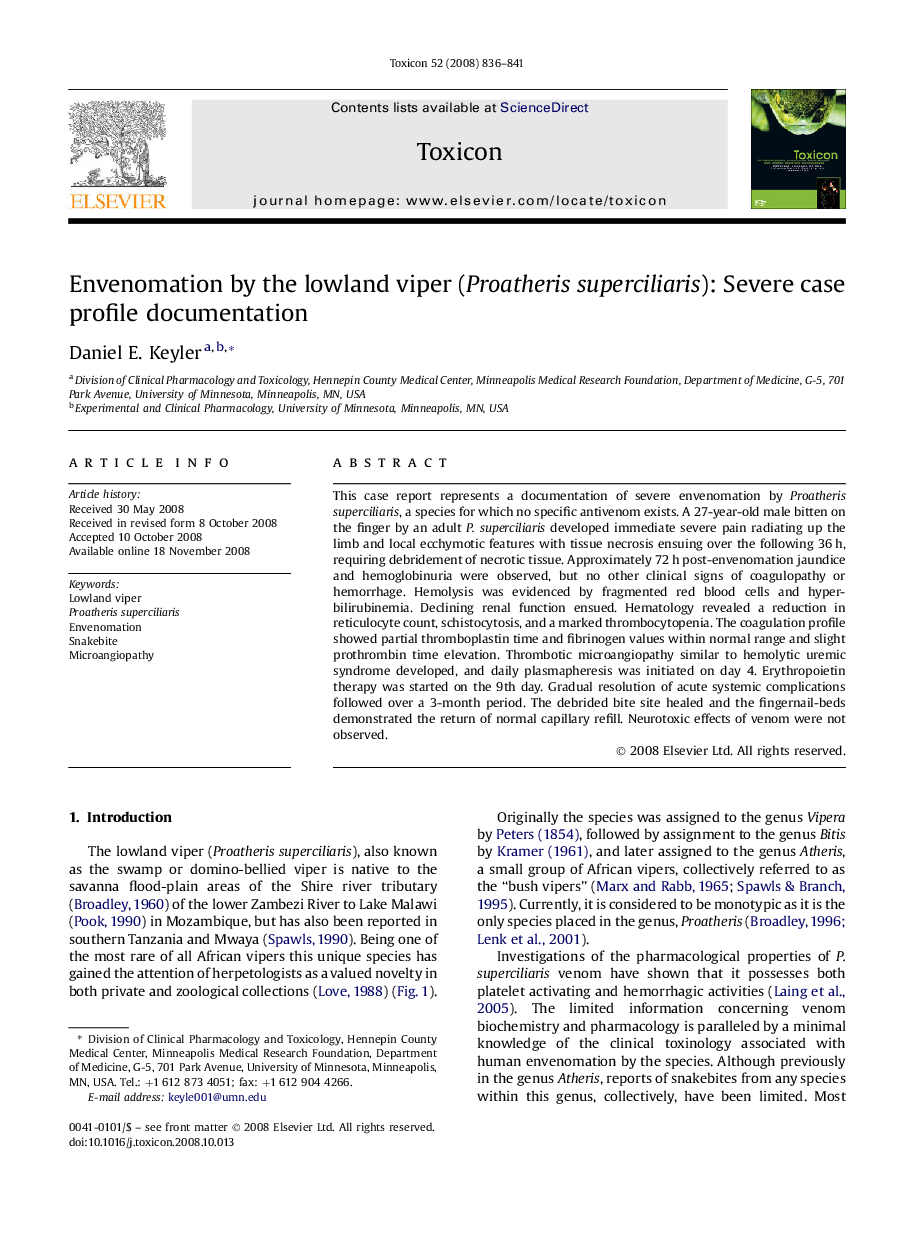| Article ID | Journal | Published Year | Pages | File Type |
|---|---|---|---|---|
| 2065778 | Toxicon | 2008 | 6 Pages |
Abstract
This case report represents a documentation of severe envenomation by Proatheris superciliaris, a species for which no specific antivenom exists. A 27-year-old male bitten on the finger by an adult P. superciliaris developed immediate severe pain radiating up the limb and local ecchymotic features with tissue necrosis ensuing over the following 36Â h, requiring debridement of necrotic tissue. Approximately 72Â h post-envenomation jaundice and hemoglobinuria were observed, but no other clinical signs of coagulopathy or hemorrhage. Hemolysis was evidenced by fragmented red blood cells and hyperbilirubinemia. Declining renal function ensued. Hematology revealed a reduction in reticulocyte count, schistocytosis, and a marked thrombocytopenia. The coagulation profile showed partial thromboplastin time and fibrinogen values within normal range and slight prothrombin time elevation. Thrombotic microangiopathy similar to hemolytic uremic syndrome developed, and daily plasmapheresis was initiated on day 4. Erythropoietin therapy was started on the 9th day. Gradual resolution of acute systemic complications followed over a 3-month period. The debrided bite site healed and the fingernail-beds demonstrated the return of normal capillary refill. Neurotoxic effects of venom were not observed.
Keywords
Related Topics
Life Sciences
Biochemistry, Genetics and Molecular Biology
Biochemistry, Genetics and Molecular Biology (General)
Authors
Daniel E. Keyler,
